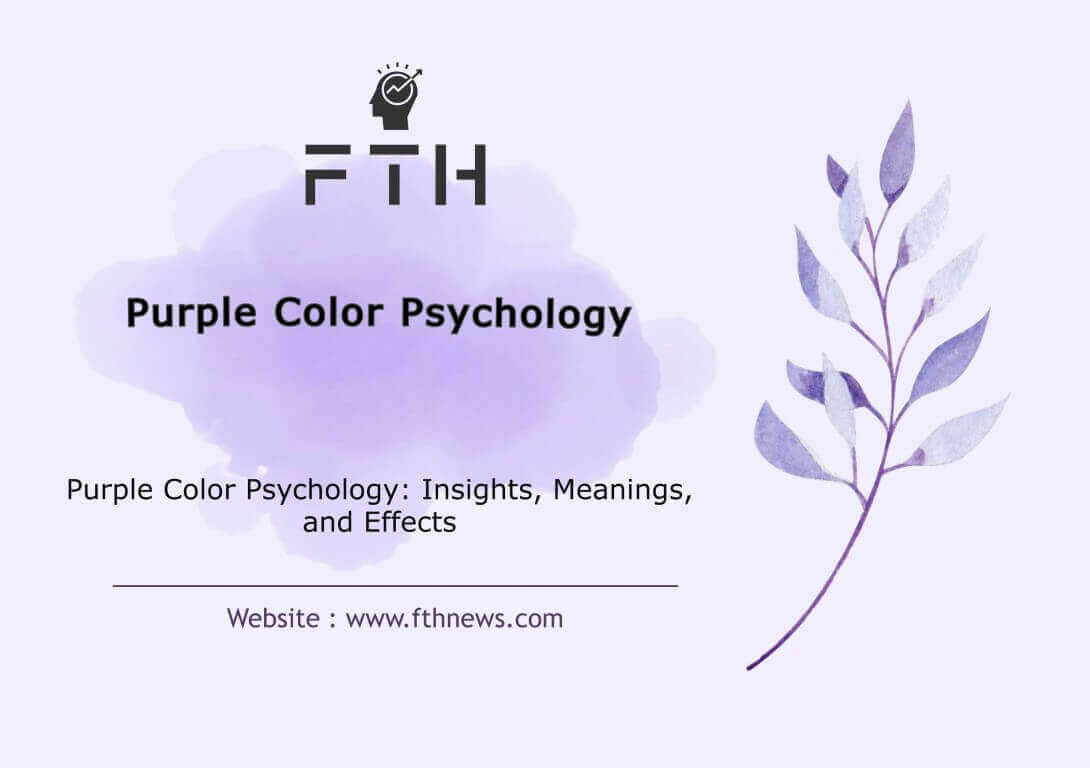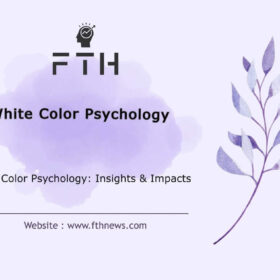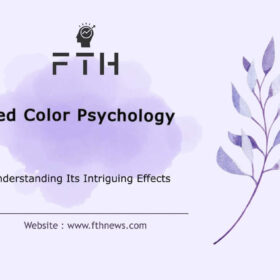
Purple Color Psychology: Purple is one of the three secondary colors, created by combining the primary colors red and blue. It is uniquely positioned as neither a warm nor a cool color, striking a balance between the two. Historically, purple was the first secondary color created by man, with yellow being its complementary color.
The Main Symbols of Purple Color
Purple is a color imbued with profound symbolism, reflecting a rich tapestry of meanings that have evolved over centuries. Here are some of the key symbols associated with the color purple:
- Royalty: For centuries, purple has been considered a regal color, often worn by emperors, kings, and high-ranking officials. This association stems from the rarity and expense of purple dye in ancient times, which made it accessible only to the wealthy and powerful. Notably, purple was the royal color of Caesar, symbolizing the highest echelons of power and authority.
- Value: Purple conveys a sense of worth and credibility. It is often used to signal something of high importance or value, whether in ceremonial robes or in branding and marketing to denote premium quality.
- Holiness: In various cultures, purple is revered as a holy color. In ancient Egypt, purple was associated with virtue and the divine, while in Christianity, it symbolizes penance, humility, and faith, often worn by clergy during significant religious ceremonies.
- Courage: The color purple is also a symbol of bravery and valor. This symbolism can be traced back to military awards and honors, such as the Purple Heart, given to soldiers who have demonstrated exceptional courage.
- Authenticity: Purple represents authenticity and true personality. It is often associated with individuals who are genuine, unique, and non-conformist. This symbolism makes purple a popular choice for those who value individuality and self-expression.
Each of these symbols reflects a different facet of purple’s rich and multifaceted identity, illustrating why it remains such a powerful and evocative color in various cultural and historical contexts.
Purple Color Psychology in Design
In design, purple combines the stability and calmness of blue with the energy and warmth of red, offering a versatile palette that can convey various messages depending on the shade. Here’s how different shades of purple are used in design to evoke specific feelings and ideas:
- Dark Purple: Traditionally symbolizes luxury, wealth, and sophistication. Dark purple is perfect for creating a sense of grandeur and exclusivity. It’s often used in high-end branding, luxury products, and elegant interior designs to convey a rich and opulent atmosphere.
- Light Purple: Shades like lilac and lavender are often associated with romance, nostalgia, and tranquility. These lighter purples are ideal for softer, more intimate design elements. They are frequently used in home decor, wedding themes, and feminine branding to create a calming and inviting ambiance.
Purple is also a powerful symbol of creativity and imagination. Its unique position between red and blue makes it a dynamic and intriguing color, often chosen by designers to inspire and captivate their audience. Here’s how purple can be effectively used in different design contexts:
Purple Color Psychology in Branding:
Purple can set a brand apart by conveying luxury, creativity, and uniqueness. It’s particularly effective for brands that want to be seen as innovative, high-end, or mystical. Companies like Cadbury and Hallmark use purple to enhance their brand identity and appeal.
Purple Color Psychology in Interior Design:
In interior design, purple can create various moods depending on its shade. Dark purple can make a room feel regal and sophisticated, while light purple can make it feel serene and romantic. It’s a versatile color that can be used in living rooms, bedrooms, and even offices to promote creativity and calm.
Purple Color Psychology in Fashion:
In fashion, purple is often used to make bold statements. Dark purple gowns and accessories exude elegance and power, while light purple garments can add a touch of romance and whimsy. Purple’s rich and varied tones allow for a wide range of expressions in fashion design.
By understanding the psychological impact and cultural significance of purple, designers can use this color to evoke specific emotions and messages effectively. Whether aiming to create a sense of luxury, inspire creativity, or provide a calming influence, purple offers a rich and versatile palette to work with.
The Meaning of Purple Color
Purple is rich with symbolism and connotations, resonating with diverse attributes that span across history, culture, and psychology. Here are some of the key meanings associated with the color purple:
Wisdom:
Purple is often associated with deep thinking, introspection, and enlightenment. It is a color that promotes mental clarity and intellectual prowess.
Creativity:
Known to spark imagination and innovative ideas, purple is a favorite among artists and creatives. Its unique blend of red’s energy and blue’s calmness makes it an inspiring color for fostering creativity.
Royalty:
Historically linked to nobility and power, purple has been the color of choice for royalty and the elite. This association with royalty dates back to ancient times when purple dye was rare and expensive.
Ambition:
Purple represents drive, determination, and the pursuit of goals. It is a motivating color that encourages ambition and perseverance.
Luxury:
With its rich and opulent appearance, purple conveys a sense of luxury and high status. It is often used in branding to denote premium quality and exclusivity.
Magic:
Evoking a sense of mystery and the supernatural, purple is a color deeply connected to magic and the mystical. It is often used in contexts that require a touch of the fantastical and otherworldly.
Extravagance:
Purple implies wealth, indulgence, and extravagance. Its bold and striking nature makes it a popular choice for settings that aim to impress and dazzle.
Peace:
While often seen as bold, purple also promotes calm and tranquility. Lighter shades, such as lavender, are particularly effective in creating peaceful and soothing environments.
Pride:
Purple denotes dignity, self-respect, and pride. It is a color that commands respect and signifies a strong sense of identity.
Independence:
Symbolizing freedom and individuality, purple is often associated with people who are non-conformist and unique. It celebrates the courage to stand out and be different.
Wealth:
Purple signifies financial prosperity and abundance. Its historical association with affluence makes it a color that denotes success and material wealth.
Purple’s rich array of meanings makes it a versatile and powerful color in various contexts, from personal expression to design and branding. Understanding these connotations allows for more intentional and impactful use of this majestic hue.
Types of Purple Spectrum
The purple spectrum encompasses a range of shades and tones, each bringing its own unique essence and emotional impact. Understanding these variations can help in selecting the right shade for your needs, whether for design, decor, or personal expression. Here are some of the notable variations within the purple spectrum:
- Lilac: A light, delicate shade of purple that exudes a sense of innocence and youthfulness. Often associated with springtime and renewal, lilac is a popular choice for creating a soothing and serene atmosphere.
- Violet or Blue Violet: A vibrant, bluish-purple tone that combines the calm stability of blue with the energy of red. Violet is often linked to spirituality, creativity, and enlightenment, making it a powerful color for stimulating deep thought and imagination.
- Purple: The classic and balanced mix of red and blue, purple sits at the center of the purple spectrum. It embodies a blend of stability and energy, often associated with luxury, nobility, and ambition. Purple can be both bold and soothing, depending on its use and context.
- Red Violet: A purplish-red hue that leans more towards the warmth of red while retaining the coolness of blue. Red violet is dynamic and passionate, often used to convey a sense of energy, excitement, and vitality. It’s a striking choice for making bold statements in design and fashion.
Each shade within the purple spectrum can evoke different emotions and convey various messages, allowing for a wide range of applications. Whether you’re looking to create a calming environment, inspire creativity, or signify luxury, there’s a shade of purple that can perfectly match your intentions.
Historical and Cultural Significance of Purple
Throughout history, purple has held a prominent place in various cultures and traditions. Here are some intriguing facts about the color purple and its significance across different contexts:
- Planetary Association: In astrology and mythology, purple is often associated with Jupiter, the planet of expansion, wisdom, and prosperity. This connection enhances purple’s symbolism of grandeur and knowledge.
- Historical Attire: Purple garments were historically worn by wealthy and influential people, a tradition that dates back to ancient civilizations. The rarity and cost of purple dye, made from the murex snail, meant that only the elite could afford it. This association cemented purple’s status as a color of luxury and exclusivity.
- Mourning Color: In Thailand, purple is used as a mourning color for widows. This cultural nuance highlights purple’s versatility and its different meanings across the world.
- Caesar’s Royal Color: Purple was famously known as the royal color of Julius Caesar. Roman emperors and other leaders adopted purple as a symbol of their supreme authority and divine right to rule.
- Spirituality: Purple is a highly spiritual color, often associated with the highest level of consciousness and thought in spiritual practices. It is believed to enhance meditation and spiritual enlightenment, making it a favored color in many religious and spiritual contexts.
- Rainbow Spectrum: Among the colors of the rainbow, purple has the strongest color spectrum, embodying a wide range of tones from deep, dark purples to light, pastel hues. This broad spectrum reflects purple’s dynamic and multifaceted nature.
- Cleopatra’s Favorite: Purple was the preferred color of Cleopatra, the last active ruler of the Ptolemaic Kingdom of Egypt. Her affinity for purple further solidified its status as a color of royalty and power.
These historical and cultural associations illustrate the depth and richness of purple’s significance.
Personal Reflections on the Color Purple
Purple has always held a special place in my heart, invoking a spectrum of emotions and thoughts that few other colors can match. Its unique blend of the passionate energy of red and the serene calmness of blue creates a color that is both stimulating and soothing. Here are my personal reflections on the color purple:
A Color of Creativity: Purple color psychology
For me, purple is the ultimate symbol of creativity. Whenever I’m surrounded by purple, whether in nature through the sight of blooming lavender or in an artistic setting, I feel an immediate surge of inspiration. It encourages me to think outside the box and explore new ideas with a fresh perspective.
Elegance and Sophistication:
Dark purple hues have always struck me as incredibly elegant and sophisticated. They carry an air of mystery and luxury that feels timeless. I find myself drawn to deep purples in fashion and interior design, as they create spaces and styles that are both commanding and refined.
Tranquility and Peace:
Lighter shades of purple, like lilac and lavender, evoke a sense of tranquility and peace in me. These colors remind me of quiet spring mornings and serene moments of reflection. They have a calming effect, making them perfect for creating relaxing environments in my home and workspaces.
Spiritual Connection:
Purple also has a profound spiritual significance for me. It represents a higher level of consciousness and introspection. In moments of meditation or spiritual practice, I often envision purple as a color that guides me toward deeper understanding and enlightenment.
Individuality and Uniqueness:
Wearing or using purple has always felt like a statement of individuality. It’s a color that not everyone gravitates towards, making it a perfect choice for expressing uniqueness and personal style. Purple allows me to stand out and embrace my authentic self.
Historical Fascination:
Learning about the historical significance of purple has deepened my appreciation for the color. Knowing that it was once a symbol of royalty and wealth, used by emperors and queens, adds a layer of historical depth to its modern appeal.
Purple, in all its varied shades and meanings, continues to be a source of inspiration and comfort. It is a color that embodies the complexity of human emotions and experiences, making it a perpetual favorite in my life. Whether I’m seeking inspiration, elegance, peace, or a deeper spiritual connection, purple always seems to offer just what I need.
Conclusion
Purple Color Psychology: Purple is a color with deep historical roots and rich symbolism, offering a unique blend of meanings that range from luxury and royalty to creativity and spirituality. Its diverse shades—from the delicate lilac to the opulent dark purple—allow it to convey a wide array of emotions and messages.
In design, purple’s versatility makes it an invaluable tool for creating sophisticated, romantic, or inspiring atmospheres. Its historical associations with power and wealth, along with its cultural significance in various traditions, give it a timeless appeal. Whether used in branding, interior design, fashion, or art, purple continues to captivate and enchant, providing a powerful means to express creativity and individuality.














